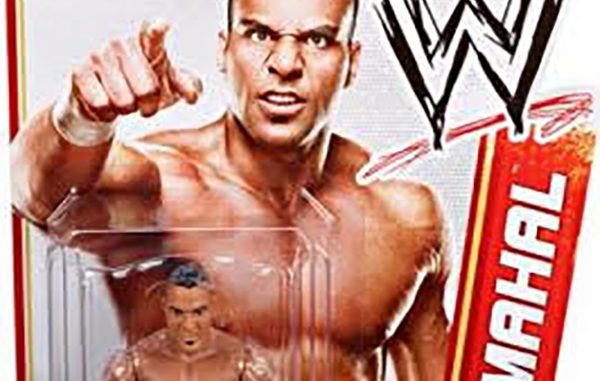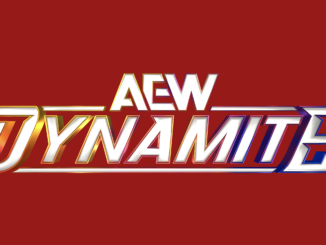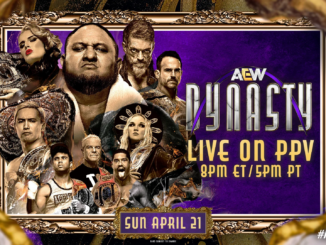
SPOTLIGHTED PODCAST ALERT (YOUR ARTICLE BEGINS A FEW INCHES DOWN)...
Often when WWE gets behind a new wrestler with a strong push, collectors are the first to buy in. When Ryback was shot to the top in the fall of 2012, collectors instantly drove up the price of a 2011 Mattel Skip Sheffield figure from $10 to over $100. Likewise, Roman Reigns’ 2013 Topps Best of WWE autograph went from $15 to $75 within days when he was given a standout performance at the 2014 Royal Rumble.
But what about Jinder Mahal? Literally within one week, Mahal went from perennial jobber to pay-per-view main eventer. Just a few weeks later, the guy who once played air sitar for Three Man Band was WWE World Champion.
Mahal previously wrestled for WWE from 2010 to 2014, so he has a few action figures and trading cards. Mattel made three basic WWE action figures of Mahal during his previous run. His Series 19 figure has him decked out in white gear. A Battle Packs Series 22 (a two-pack with Ryback) figure has Mahal in bright pink trunks. Finally, a Series 35 figure has Mahal in black pants, capturing his 3MB look. 
Of the three figures, the two in trunks seem to be the most popular with collectors today. The 3MB figure with the black pants is the most abundant and least resembles Mahal today.
Collectors have shown modest interest in Mahal’s figures, but they aren’t regularly selling much higher than they were three months ago. Loose figures tend to sell in the $10-$15 range, while a packaged Series 19 (white trunks) figure seems to have settled into the $15-$25 range.
Since Mahal’s unlikely WWE World Title win, more auctions have popped up on eBay at higher prices, but collectors aren’t biting. While collectors appear to be willing to pay a fair price for Mahal’s action figures, they aren’t about to get sucked into a bidding war.
The same can be said for Mahal’s trading cards. Mahal first appeared in the 2011 FCW card set, which featured early cards of AJ Lee, Seth Rollins, Dean Ambrose, Roman (Reigns) Leakee, Husky Harris and others. Unlike many of those others, collectors just don’t seem all that interested in Mahal’s first card. As recently as May 15, one sold for just $5.
Mahal’s only certified autograph is from the 2011 Topps WWE Classic set. In March and April that card was selling regularly for around $15. In the weeks since Jinder’s push started, it continues to sell for the same price, with some sales sneaking into the $20-$25 range.
So what makes Jinder different from guys like Ryback and Reigns? Why are his collectibles failing to take off while theirs soared? There are plenty of reasons, some of which most wrestling fans can identify, others of which are more specific to the volatility of the collectibles market.
Jinder the jobber. Ryback was a hot new act. Reigns was part of the heavily protected, white hot Shield. Mahal spent the last year losing almost every match. Fans see him a certain way, and WWE has an uphill battle on its hands in terms of changing that perception. 
Jinder just isn’t very good. All but the most loyal WWE Kool Aid drinkers realize that Mahal’s push didn’t come from his ability to cut good promos or have strong matches. Instead, Mahal has been elevated because he’s changed his physique to resemble Vince McMahon’s vision of what a WWE Superstar should be, and he might be able to help them find their way into the emerging (but complex) Indian market.
WWE can’t make stars. Baseball collectors are prospectors: they’re looking for the next big thing before he’s out of Single A baseball. Football collectors are reactionary: card prices go up after a rookie has had a big game. Wrestling collectors are … well, just wrestling fans. Some collectors have tried to be prospectors and pick up cards of who appear to be on the main event path, like Reigns or Bray Wyatt. But how can collectors identify the next big stars when Vince and company can’t even do it? If wrestling fans are going to just collect their favorites instead of looking for investments, there’s no way Mahal is going to compete with stars like Alexa Bliss or Finn Balor for fans’ attention.
Too many cards. Topps’ business model when it comes to WWE cards is much different than it was three or four years ago. When Topps put out Reigns’ first autograph in 2013, the company only produced two or three sets per year, and limited the number of wrestlers who signed autographs for each product. In 2017, Topps will release at least eight different WWE products, many of which will include the same wrestlers signing autographs. Topps does a great job of super serving wrestling fans, but collectors know by now that there will be plenty more Jinder autos to come.
No Elite. Many hardcore collectors of WWE action figures prefer Mattel’s Elite line, and Jinder hasn’t been a part of that yet. Some collectors may just be waiting for a better Mahal figure to come along.
Final Thoughts
Jinder Mahal’s ascension to the main event may be the strangest story of 2017, but it seems like fans are willing to give him a chance. It doesn’t look like Mahal is going to set the world on fire, but there’s no early evidence of his run being a disaster either. Collectors seem to be taking a similar wait-and-see approach, as is evident by looking at the demand for his action figures and trading cards.
NOW CHECK OUT THE PRIOR COLUMN: COLLECTIBLES COLUMN: New Wrestling Cards from Topps and Leaf Drop this Week
PWTorch Collectibles Specialist Michael Moore can be reached at michaelmoorewriter@gmail.com. Follow him on Twitter @MMooreWriter.




Leave a Reply
You must be logged in to post a comment.